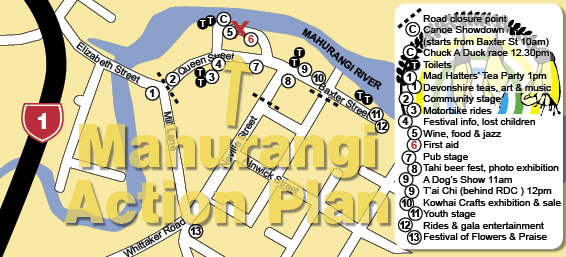Bad language but boundary brilliant

Great Timing: Northern boundary success is beautifully timed for a suitable celebration as part of Warkworth’s Kowhai Festival. map Mahurangi Magazine
The New Zealand Herald story will be very welcome news to friends of the Mahurangi.
Particularly those overseas, whose evening television coverage would have struggled to report on the battle of the Pūhoi–Makarau Line, in the absence of actual blood on the floor at Matakana, or the Beehive.
Mahurangi is firmly back within the region’s boundary—within what the media will no doubt insist is the [superlative deleted]-city.
Newspapers are generally sticklers for language. Fairfax is no exception and initially, rather than join the trend to use the aforementioned term, instructed its subeditors to use the royal commission term: Auckland Council. Fairfax, however, then joined the reaction to the government’s implementation of the commission’s recommendations. Leaving it with the conundrum of how to use the pejorative term, professionally?
Fairfax staff, according to an Auckland Regional Council source, are instructed to use supercity. This is an Americanism dating from the 1920s, and the definition sounds vaguely plausible for the region’s urban sprawl:
a large, heavily populated urban area that includes several cities; megalopolis.
But by any stretch Auckland does not, and may never, meet this definition—it doesn’t even make it to the top 200 cities. And the limited, legislative, sense that suburban centres such as Takapuna ever qualified to be called cities, is now eliminated. Size, meantime, isn’t everything: Places such as Whanganui legitimately squeak in as cities because they are big fish amongst small, provincial towns.
The lax language goes back to the commission, in spite of its terms of reference rigorously referring to the region. But even region would be unnecessary if the conviction could be found to embrace a suitable geographic name for the territory. In its first article on the subject, in January 2008, the Mahurangi Magazine suggested Makaurau: Many lovers. And not in the sense of the 1960s, but rather to echo Tāmaki-makau-rau, while leaving out the reference to fighting for possession.
By bizarre coincidence, when a fresh name was introduced in the regional governance context, it was but one letter different from Makaurau: Makarua—the western end of the entirely ill conceived Pūhoi–Makarau Line.
At the close of Saturday’s historic meeting at Matakana, Dr Lockwood Smith offered to argue for stronger representation for the Rodney area. In arguing for two, rather than one representative for the Rodney area, Dr Smith will be responding to the a prevailing concern of many of the afternoon’s speakers, regardless of their opinion on ‘splitting’ Rodney. Ironically, having two representatives will split Rodney—there can’t be two Rodney wards. But that will not matter a jot: The old Rodney county and the remnant of Waitematā were only wedded as an amalgamation expedience, a decision taken in 1972.
(The stillborn Pūhoi–Makarau line was almost exactly the old county boundary, which in part was the Waiwera River.)
The Mahurangi has every excuse to celebrate, and the opportunity: The Kowhai Festival.
